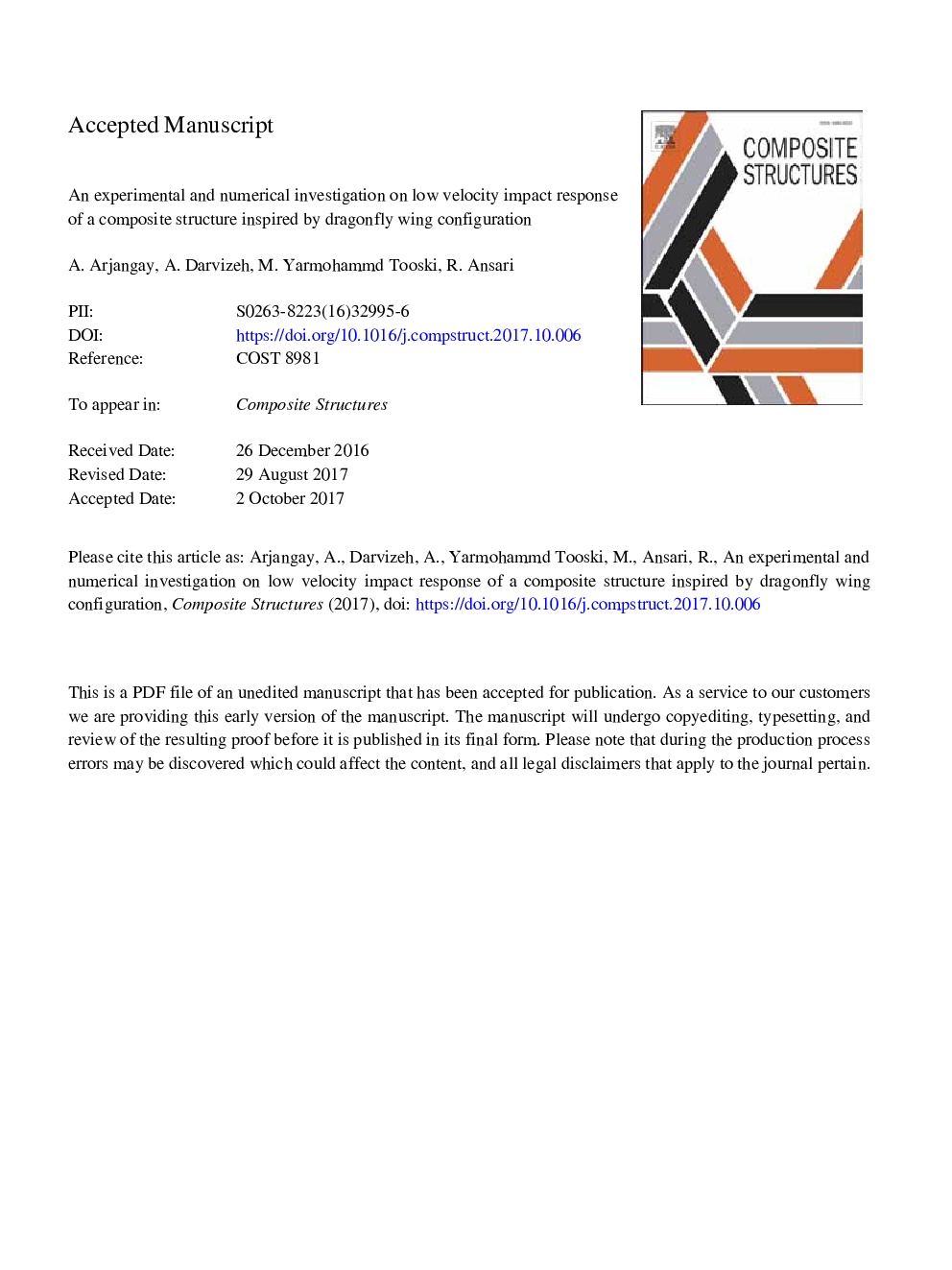| Article ID | Journal | Published Year | Pages | File Type |
|---|---|---|---|---|
| 4917590 | Composite Structures | 2018 | 34 Pages |
Abstract
The low velocity impact response of a novel foam-based composite structure inspired by microstructural features of dragonfly wings is investigated through the use of FE model and experiments. A nonlinear progressive damage model of the composite skins is incorporated into the FE code by VUMAT subroutine. Inter-laminar damage is reproduced using interface cohesive elements and the foam core is modeled as a crushable foam material. The numerical results are compared with experimental data acquired by impact testing on bio-inspired structures consisting of E-glass/epoxy skins filled by polyurethane foam, where a good agreement is achieved. To assess the contribution of the sandwich vein on the impact behavior of the structure, a comparison is made between different veiny structures and monolithic laminates with the same materials under low velocity impact. It is concluded that the sandwich vein can limit the damage propagation and makes the rest of the structure remain intact.
Related Topics
Physical Sciences and Engineering
Engineering
Civil and Structural Engineering
Authors
A. Arjangpay, A. Darvizeh, M. Yarmohammad Tooski, R. Ansari,
